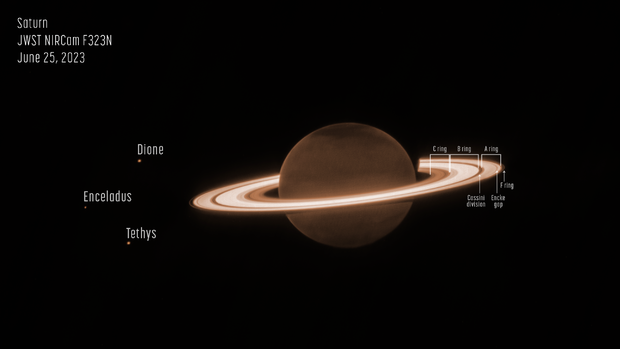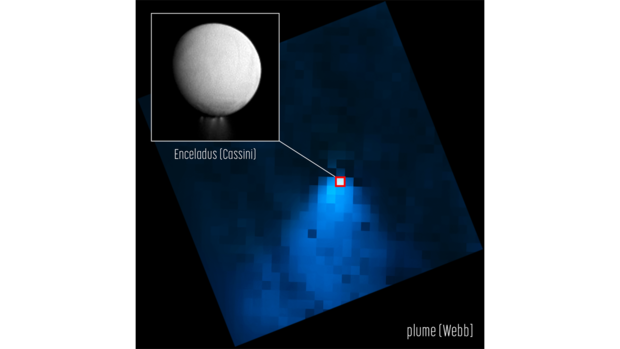Saturn's rings radiate brilliant glow in detailed new image from Webb space telescope
The James Webb Space Telescope has produced a stunning new image of Saturn and its rings, which appear to glow in the space telescope's first near-infrared observations of the planet.
NASA unveiled a color-corrected image on Friday, several days after Webb's near-infrared camera turned to face Saturn along its journey through the outer solar system. Several of the planet's rings, as well as some moons in its orbit, are clearly visible in the rendering, while Saturn itself appears dark and shaded.
The stark contrast between the planet and its shimmering rings lends itself to an overall look that NASA described as "unusual." The space agency explains in a news release that the infrared wavelength observed by Webb to produce this particular image was being absorbed by methane gas on Saturn. While methane absorbs almost all of the sunlight falling on the atmosphere at such a distant location from the sun, the planet's icy rings still appear bright in the image.
The latest, unprecedented view of Saturn comes as researchers continue to probe the massive planet in hopes of learning more about the Saturnian system at large. Earlier this year, the Webb telescope detected an enormous plume of water vapor erupting from the surface of Enceladus, a Saturn moon sometimes referred to as an "ocean world" because of its makeup and distinctively icy outer shell.
When they announced that discovery, NASA scientists said the plume, extending about 6,000 miles out from the moon's south pole and toward Saturn's rings, was especially interesting because of the role it may play in feeding the broader Saturnian water system. Enceladus on its own has been flagged by researchers as a compelling place to conduct further research, since the mass is largely composed of salt water and those properties make it an appealing target to probe for extraterrestrial life.
Enceladus — one of at least 124 moons caught in Saturn's orbit — appears again in the newly-released image of Saturn, alongside two others, Dione and Tethys.
The latest image was taken as the Webb telescope carried out a wider "guaranteed time observation program," which included several other "very deep exposures of Saturn" meant to test the telescope's ability to detect faint moons circling around the planet and its rings, according to NASA.
"Any newly discovered moons could help scientists put together a more complete picture of the current system of Saturn, as well as its past," the agency said.
Deeper exposures observed by the Webb telescope, which are not shown in the image of Saturn revealed on Friday, will hopefully allow researchers to investigate and study some of the planet's fainter and thinner rings, too. The rings consist of rocky and icy fragments, some of which are smaller than a grain of sand. Others are as large as mountains on Earth, according to NASA.





